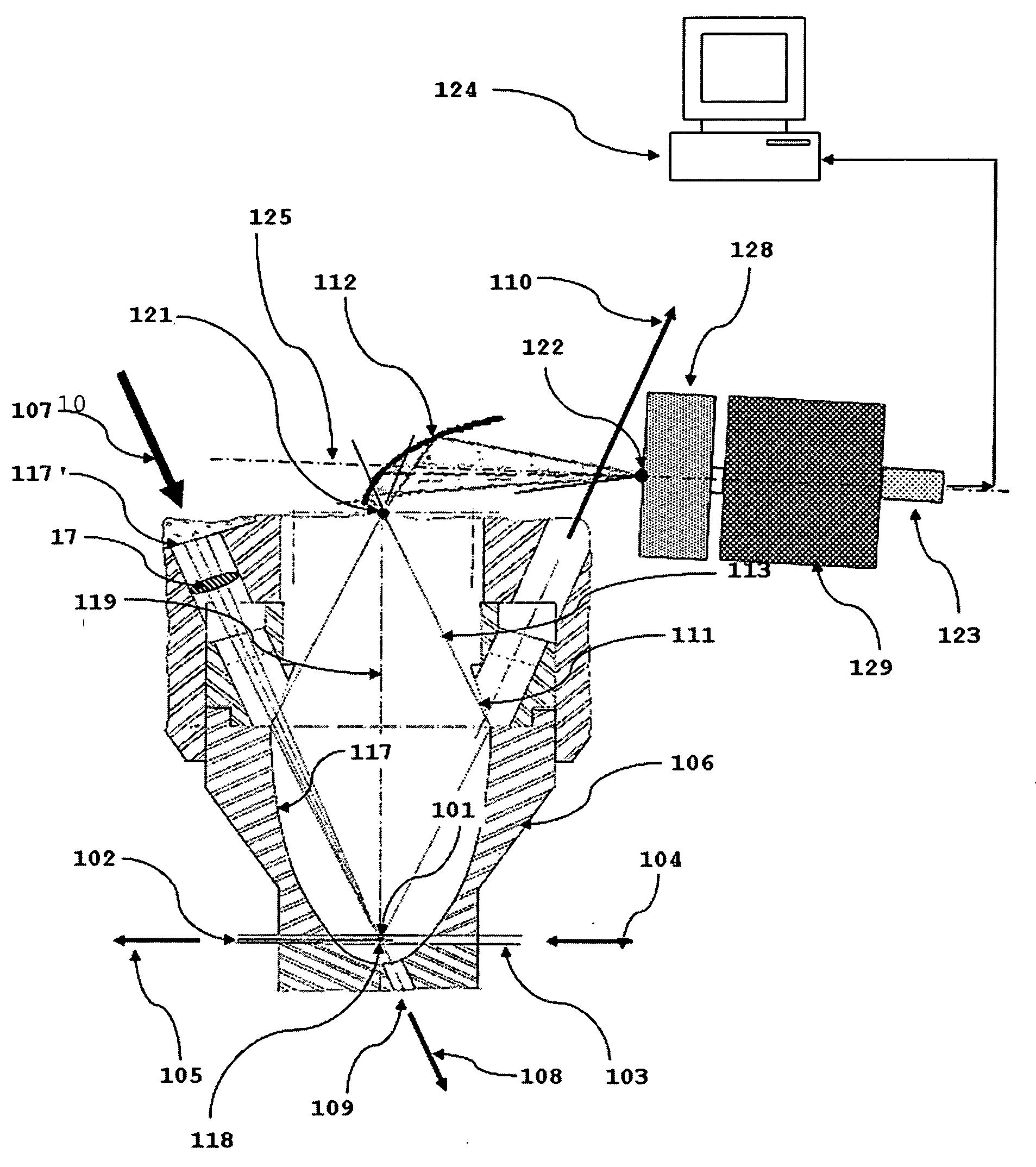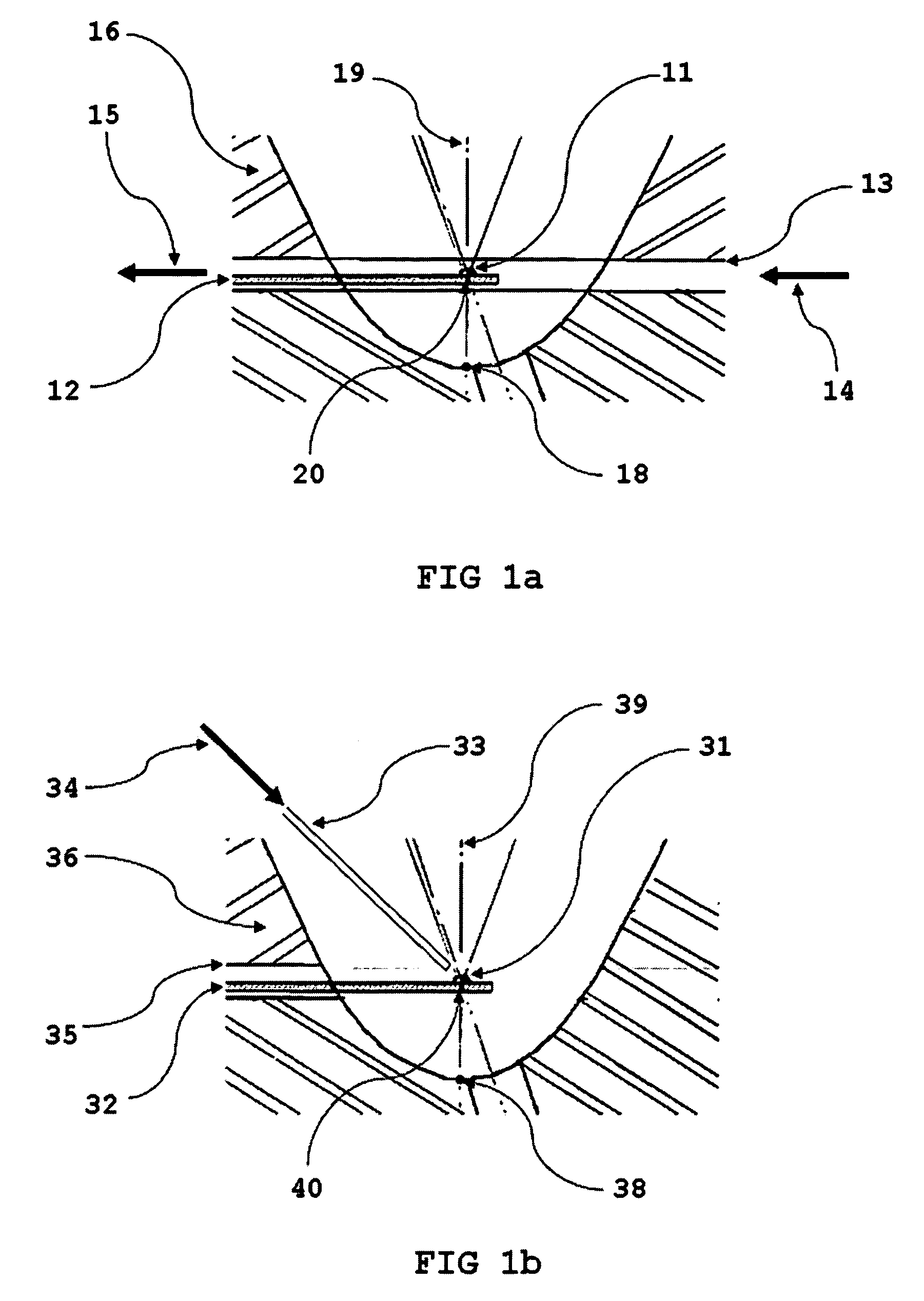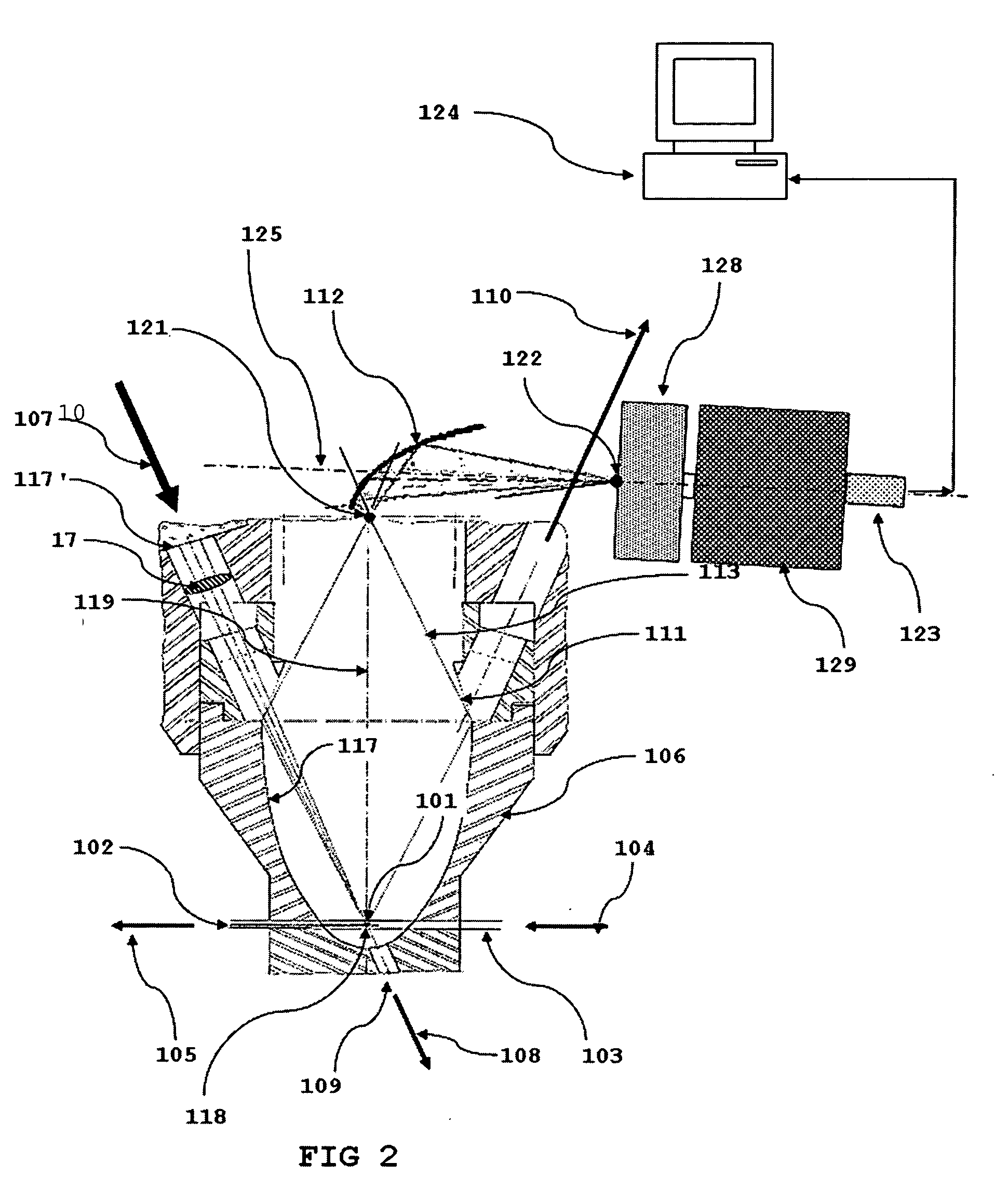Method and device for chemical component spectrum analysis
a chemical component and spectrum analysis technology, applied in the direction of material analysis, instruments, radiation pyrometry, etc., can solve the problems of difficult to convert biological data into usable data, insufficient sensitiveness and selectiveness, research came across the difficulty of knowing which physical measurement to be used, etc., to achieve sufficient collection effectiveness, excellent efficiency, and provide usable signals
- Summary
- Abstract
- Description
- Claims
- Application Information
AI Technical Summary
Benefits of technology
Problems solved by technology
Method used
Image
Examples
Embodiment Construction
[0064]FIG. 1a is a detailed longitudinal cross-sectional view illustrating schematically the position of a tube containing an olfactory receptor in the device for this example.
[0065] An olfactory receptor 11 is positioned on a longitudinal support 12 made of silica which is transparent to UV and the support / olfactory receptor assembly is inserted in a tube 13 which is transparent to UV wavelengths (between 200 nm and 300 nm in particular) in such a way that a liquid or gas fluid can circulate between an input and an output indicated by arrows 14 to 15. The tube is inserted into an aluminium cell 16 which has a concave reflective surface 17 in ellipsoid form with an axis of revolution 19 for which one of the crowns is indicated at 18. In this, the tube crosses the elliptical cell perpendicularly to the axis 19 is such a way that the olfactory receptor is positioned at a focal point 20 relating to the crown 18 for the elliptical cell.
[0066]FIG. 1b is a detailed longitudinal cross-se...
PUM
 Login to View More
Login to View More Abstract
Description
Claims
Application Information
 Login to View More
Login to View More - R&D
- Intellectual Property
- Life Sciences
- Materials
- Tech Scout
- Unparalleled Data Quality
- Higher Quality Content
- 60% Fewer Hallucinations
Browse by: Latest US Patents, China's latest patents, Technical Efficacy Thesaurus, Application Domain, Technology Topic, Popular Technical Reports.
© 2025 PatSnap. All rights reserved.Legal|Privacy policy|Modern Slavery Act Transparency Statement|Sitemap|About US| Contact US: help@patsnap.com



